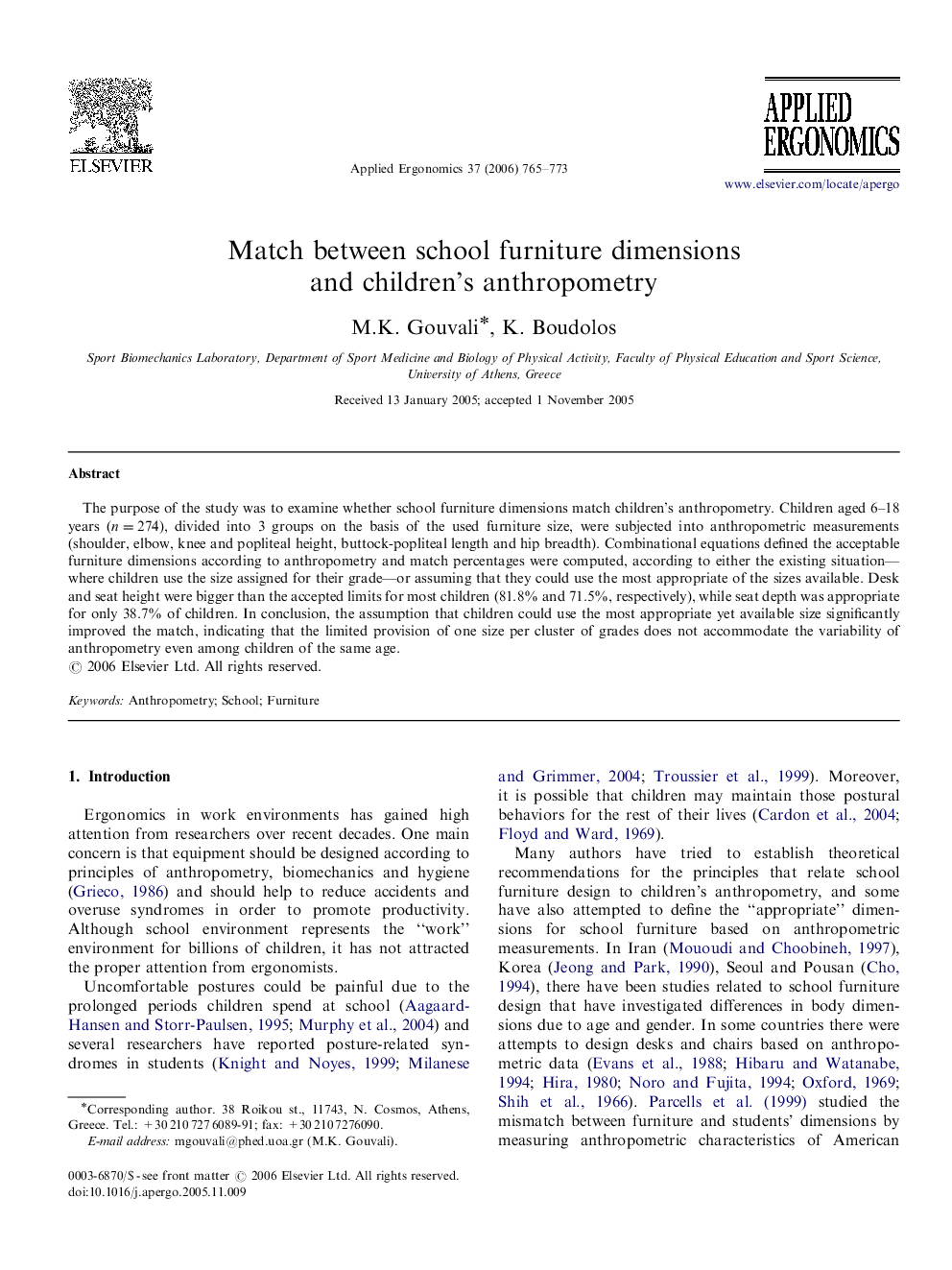| Article ID | Journal | Published Year | Pages | File Type |
|---|---|---|---|---|
| 550393 | Applied Ergonomics | 2006 | 9 Pages |
The purpose of the study was to examine whether school furniture dimensions match children's anthropometry. Children aged 6–18 years (n=274n=274), divided into 3 groups on the basis of the used furniture size, were subjected into anthropometric measurements (shoulder, elbow, knee and popliteal height, buttock-popliteal length and hip breadth). Combinational equations defined the acceptable furniture dimensions according to anthropometry and match percentages were computed, according to either the existing situation—where children use the size assigned for their grade—or assuming that they could use the most appropriate of the sizes available. Desk and seat height were bigger than the accepted limits for most children (81.8% and 71.5%, respectively), while seat depth was appropriate for only 38.7% of children. In conclusion, the assumption that children could use the most appropriate yet available size significantly improved the match, indicating that the limited provision of one size per cluster of grades does not accommodate the variability of anthropometry even among children of the same age.
